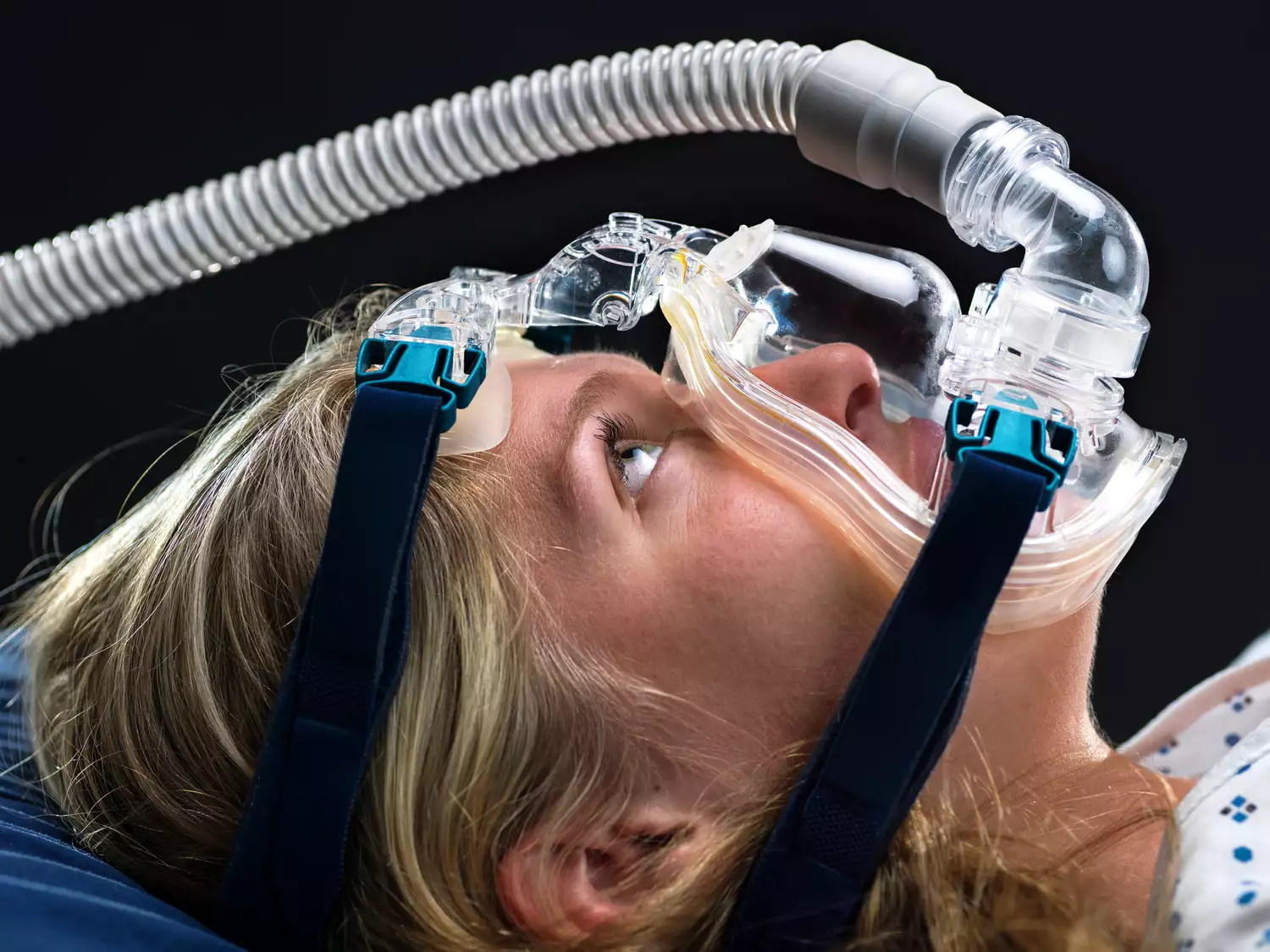Ramp time on a CPAP machine is a feature designed to make CPAP therapy more comfortable by gradually increasing the air pressure when you first start using the machine. It allows you to fall asleep at a lower pressure, which can be easier to adjust to, and then slowly increases to your prescribed level while you’re already asleep.
Table of Contents
How Ramp Time on CPAP Works
When you start using the CPAP machine at night, the ramp feature allows the machine to start at a lower air pressure and gradually increase to the prescribed pressure level. This increase happens over a set period.
The length of the ramp time can usually be adjusted according to the user’s comfort. It typically ranges from 5 to 45 minutes, depending on the machine and the user’s preferences.
On many machines, the ramp feature is optional and can be activated or deactivated as needed. Some users may find they only need the ramp feature as they are getting used to CPAP therapy, while others may prefer to use it every night.
Ramp time is particularly beneficial for new CPAP users who are adjusting to the sensation of positive airway pressure. It can help ease the transition and improve compliance with therapy.
Some advanced CPAP machines come with smart technology that can automatically adjust the ramp time based on the user’s breathing patterns and how quickly they fall asleep.
How the CPAP Ramp Time Function Benefits You
- Eases the Transition to Full Pressure – The gradual increase in pressure allows the user to fall asleep more comfortably before the machine reaches the prescribed therapeutic level. This can be particularly helpful for individuals who are sensitive to the sensation of high air pressure.
- Improves Comfort and Tolerance – Starting at a lower pressure and slowly increasing can make the overall experience of using a CPAP machine more comfortable, especially for those who may feel overwhelmed or claustrophobic with immediate full pressure.
- Enhances CPAP Adherence – One of the biggest challenges with CPAP therapy is consistent use. By making the initial experience more comfortable, the ramp function can help users adhere more consistently to their therapy.
- Reduces Anxiety and Claustrophobia – For users who experience anxiety or claustrophobic feelings with a CPAP mask, the ramp function allows them to acclimate to the sensation of the mask and the air pressure in a more controlled and gradual way.
- Facilitates Falling Asleep – Some people find it difficult to fall asleep with a sudden onset of high air pressure. The ramp function allows them to fall asleep more naturally, at a lower pressure, which can be less disruptive to the process of falling asleep.
- Customizable Comfort – Since the duration and starting pressure of the ramp function can often be adjusted, users can tailor the settings to their personal comfort levels, making CPAP therapy more personalized.
When Should You Use the CPAP Ramp Time
You should consider using the ramp feature on your CPAP machine if you find it difficult to fall asleep due to the immediate onset of full therapeutic pressure. The ramp function is especially beneficial in the following situations:
- If You’re New to CPAP Therapy: For beginners, the sensation of high air pressure can be uncomfortable or overwhelming. The ramp feature allows for a gradual adjustment, making the initial experience more tolerable.
- If You Have Difficulty Falling Asleep: If the full pressure of the CPAP machine makes it hard for you to fall asleep, using the ramp function can help. It starts with a lower pressure, increasing slowly to the prescribed level, which can be less disruptive to falling asleep.
- If You Experience Anxiety or Claustrophobia: For users who feel anxious or claustrophobic with the CPAP mask and pressure, the ramp function can ease these feelings by providing a gentle introduction to the therapy.
- If You Prefer a Gradual Pressure Increase: Some people simply find it more comfortable to begin their therapy at a lower pressure each night, regardless of how long they have been using CPAP.
Remember, the ramp feature is there for your comfort and can be adjusted or turned off based on your preference and comfort level. If you’re unsure about how to use the ramp feature effectively, it’s a good idea to consult with your healthcare provider or a sleep specialist.
When Should I Avoid Time Ramp on My CPAP Machine?
You might consider avoiding or minimizing the use of the ramp feature on your CPAP machine in certain situations:
- If You Fall Asleep Quickly: If you have no trouble falling asleep as soon as you lie down, and the full pressure of the CPAP doesn’t bother you, the ramp feature might be unnecessary.
- If You Wake Up After Falling Asleep: If you tend to wake up after initially falling asleep and find that the ramp time has reset, leading to insufficient therapeutic pressure, it might be better to avoid using it.
- If You Need Immediate Full Pressure for Effective Therapy: Some individuals require the full therapeutic pressure immediately to prevent apnea events as soon as they fall asleep. In such cases, using the ramp feature might delay the effectiveness of the therapy.
- If You’re Comfortable with Immediate Full Pressure: If you’re already accustomed to the sensation of your CPAP at full pressure and find it comfortable, the ramp feature may not provide any additional benefit.
- If It Affects Your Sleep Quality: If you find that the gradual increase in pressure disrupts your sleep more than a constant pressure, it’s better to avoid using the ramp.
How to Adjust The Ramp Time Setting
- Access the Settings Menu: Turn on your CPAP machine and access the settings menu. This is usually done by pressing a specific button or combination of buttons. The exact method can vary, so refer to your machine’s user manual for detailed instructions.
- Locate the Ramp Setting: Once in the settings menu, look for the ramp setting. It might be labeled as “Ramp Time,” “Ramp,” or something similar.
- Adjust the Ramp Time: Use the navigation buttons (which could be arrows or plus/minus buttons) to adjust the ramp time. This setting controls how long it will take for the machine to gradually increase from the initial lower pressure to the full therapeutic pressure. You can typically set this anywhere from 5 to 45 minutes, depending on your preference and comfort.
- Set the Starting Pressure: Some machines also allow you to adjust the starting pressure of the ramp. This is the pressure level at which the machine will start before ramping up to the full prescribed pressure. Adjust this setting if available and necessary.
- Save Your Settings: After adjusting the ramp time (and starting pressure, if applicable), make sure to save your settings. This might require pressing an “OK” or “Confirm” button.
- Test the New Settings: It’s a good idea to test the new settings for a night or two to see if they improve your comfort and ability to fall asleep.
- Consult the User Manual: If you’re unsure about any step in the process, refer to your CPAP machine’s user manual, which should provide detailed instructions specific to your model.
- Seek Professional Help if Needed: If you’re having trouble adjusting the settings or if you’re unsure about what settings are best for you, don’t hesitate to contact your healthcare provider or a sleep specialist for assistance.
FAQ
What Is a Good Ramp Time for CPAP?
Typically, CPAP machines offer a ramp time ranging from 5 to 45 minutes. For those new to CPAP therapy or who find high pressure uncomfortable, a longer ramp time can ease the transition, making it easier to fall asleep. Conversely, if you tend to fall asleep quickly, a shorter ramp time might suffice.
What Is the P Ramp Setting on a CPAP Machine?
The “P ramp” setting on a CPAP (Continuous Positive Airway Pressure) machine is a feature designed to enhance user comfort by gradually increasing the air pressure from a lower starting level to the prescribed therapy level. This function is particularly helpful for users who find it difficult to fall asleep with the immediate onset of full therapeutic pressure. By starting at a lower pressure and slowly ramping up, typically over a period ranging from 5 to 45 minutes, the P ramp setting allows users to acclimate to the sensation of the CPAP therapy, making it easier to fall asleep.
Do All Machines Have the Ramp Time Function?
Not all CPAP machines come equipped with a ramp time function. While it is a common feature in many modern CPAP devices, especially those designed for home use, its availability can vary depending on the model and manufacturer. Basic or older models might not include this feature.
Is It Illegal to Change CPAP Pressure?
Changing the pressure settings on a CPAP machine is not illegal, but it is generally not recommended to do so without consulting a healthcare professional. CPAP machines are medical devices prescribed by doctors, and the pressure settings are carefully determined based on each individual’s specific needs, typically identified during a sleep study.




